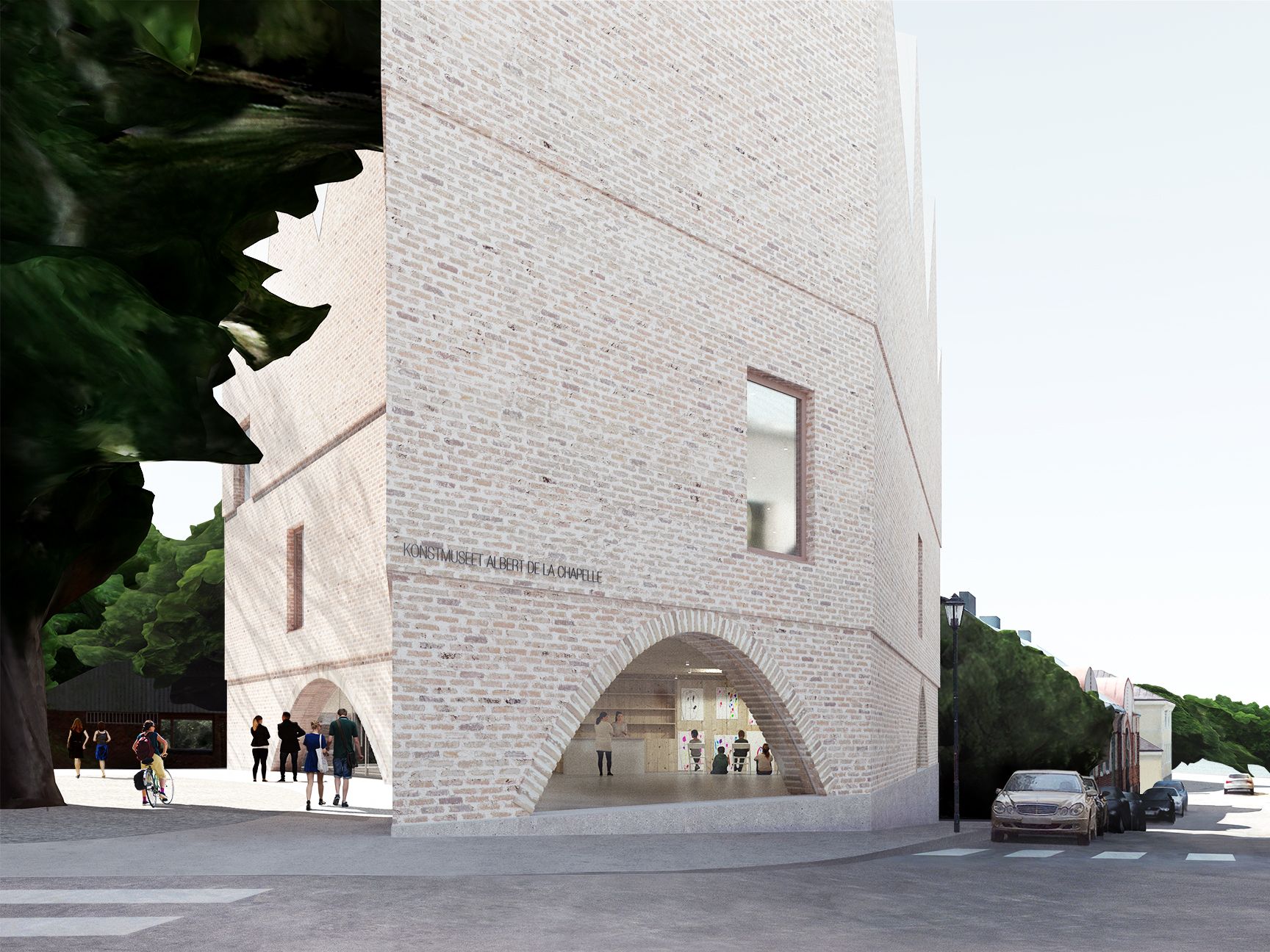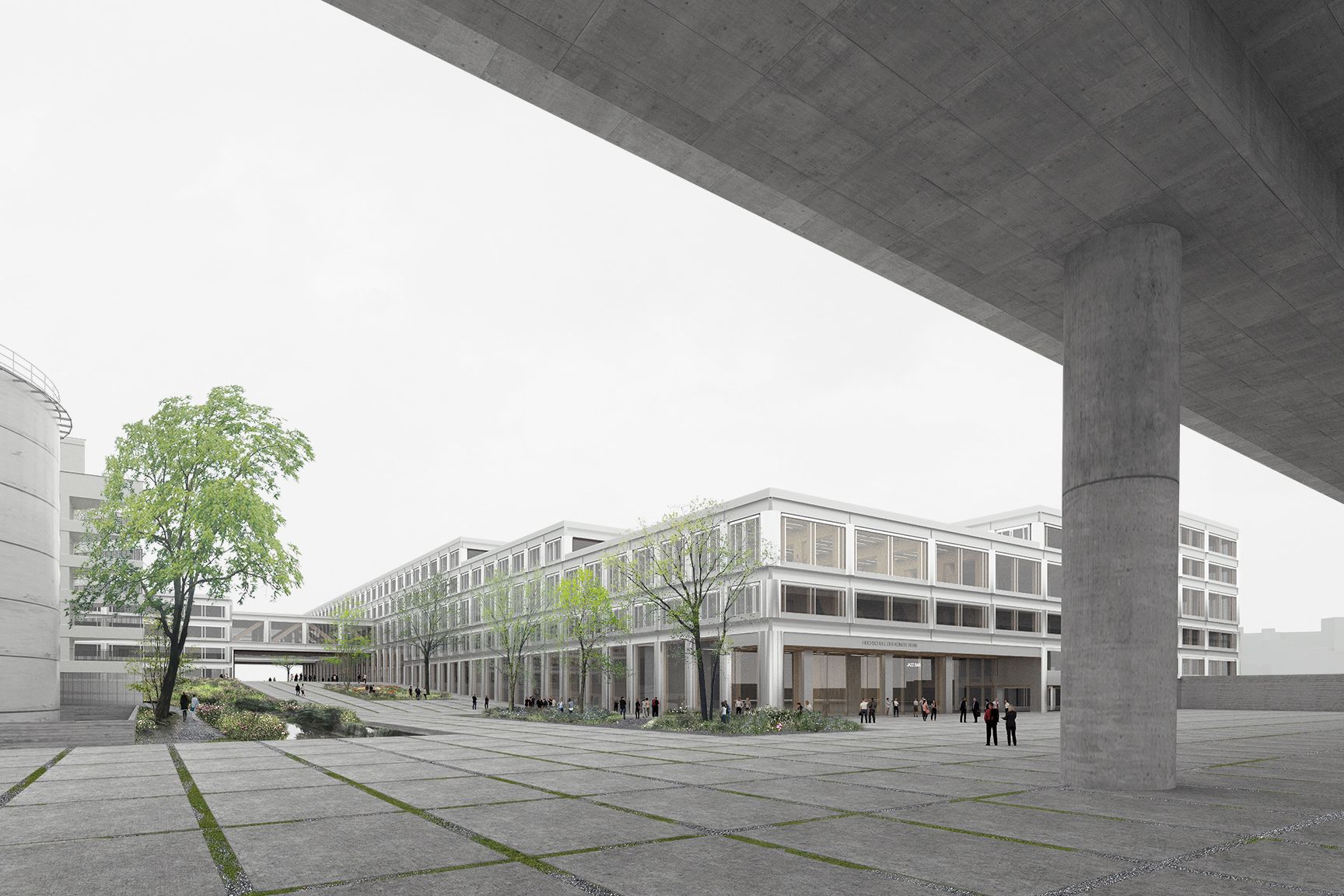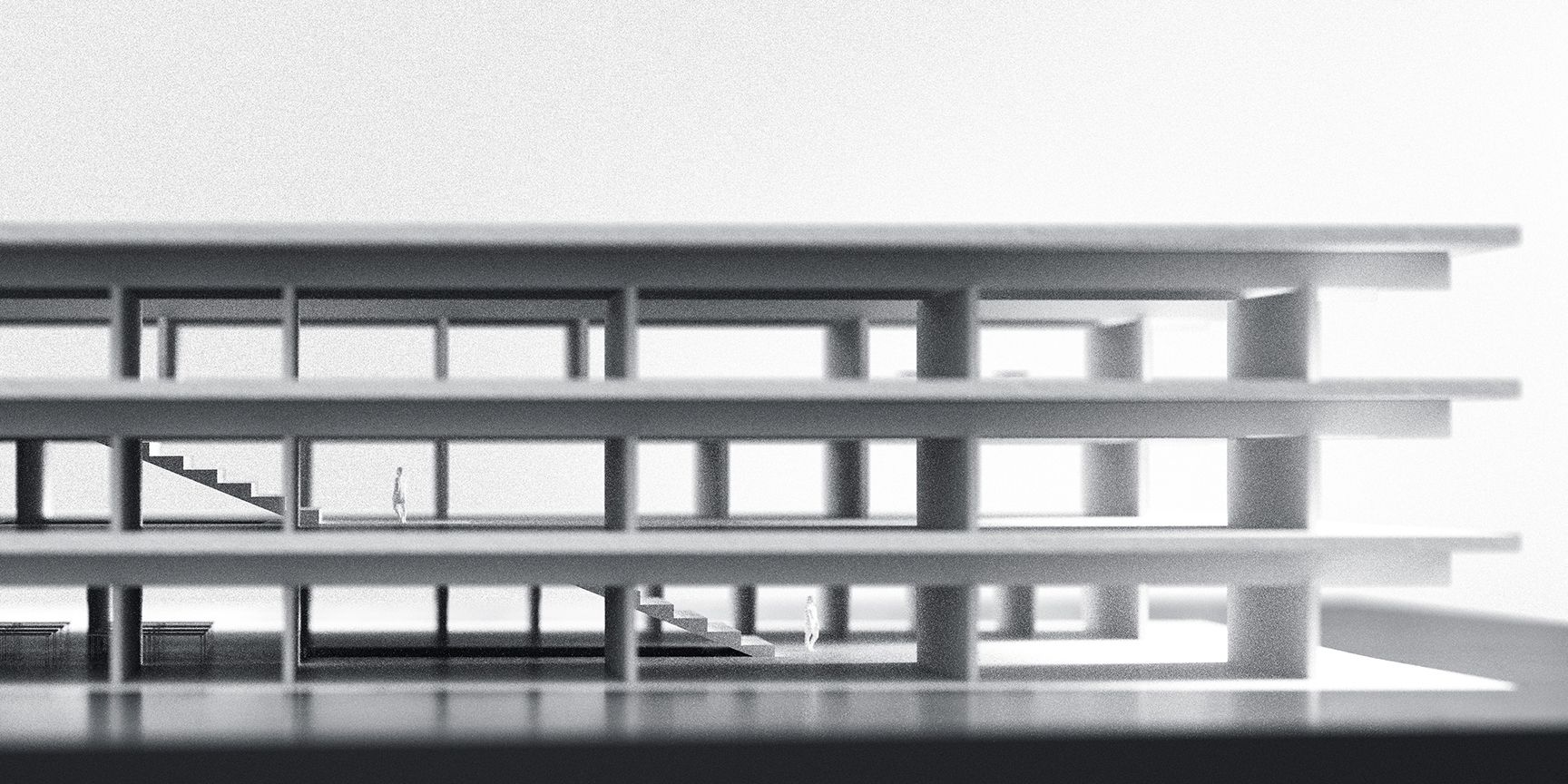Bildungshaus is a public library and education center for the city of Wolfsburg, Germany. The site is located near Klieversberg Park in the vicinity of the Wolfsburg Cultural Center by Alvar Aalto and Wolfsburg City Theatre by Hans Scharoun.
The building is designed for various types of learning from collaboration and groupwork to focused solitary study. Thematically organized media collections are accompanied by lecture spaces, classrooms, educational kitchens, gyms, ateliers, workshops, and music rehearsal rooms. An efficient circulation system is developed to connect the different programmatic entities.
The design is based on a set of geometric rules in plan and elevation. A dynamic composition emerges from four highly symmetrical volumes and a simple square column grid of 7 x 7 meters. The structural frame is made of cast-on-site concrete. The ceiling grid is made of interlocking hardwood timber beams. The building’s structural and technical concept was developed together with Arup. The design is complemented by an extraordinary plantation concept by Tita Giese.
| Bildungshaus Wolfsburg | |
|---|---|
| Type | Public library, education center |
| Location | Heinrich-Heine-Straße 44, 38440 Wolfsburg, Germany |
| Timeline | Competition (1st prize) 2013–2014, design development 2015– (on hold) |
| Size | Gross floor area 16 500 m², net usable area 10 500 m² |
| Cost | 80 000 000 EUR (estimate) |
| Client | City of Wolfsburg |
| Architect | Esa Ruskeepää |
| Team | Klemen Breitfuss, Jussi Eskelinen, Matias Kotilainen, Thomas Miyauchi, Marlène Oberli, Simon Richardus, Rubén Tomás Verde, Lauri Virkola |
| Collaborators | HENN (project manager, local partner), Arup (structural engineer, building services engineer), Fugmann Janotta Partner Landschaftsarchitekten und Landschaftsplaner (landscape architect), Tita Giese (horticultural consultant), Heinz Oberli (cost planning consultant) |








